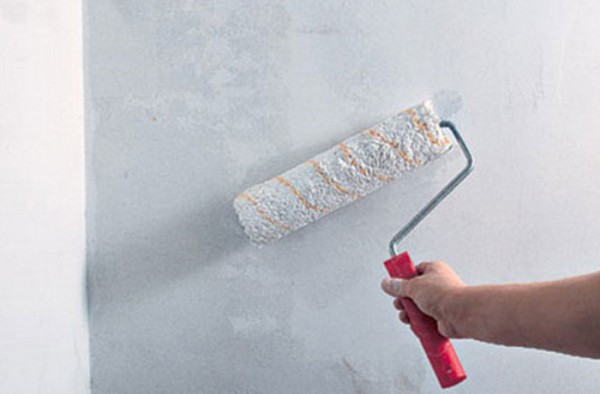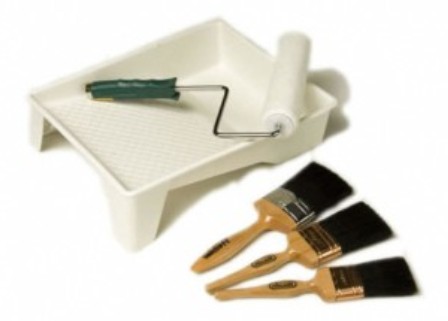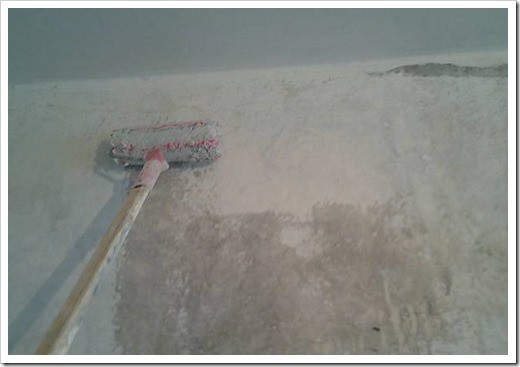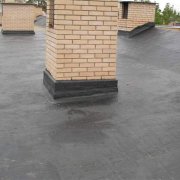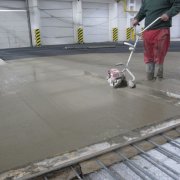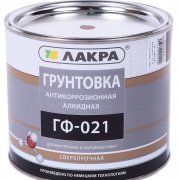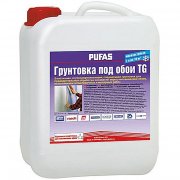Primer for wallpaper: which one to choose and how to use
The primer in front of the wallpaper protects the surface of the paintings from mold, protects them from the development of many biological pests, improves the adhesion of the material to the wall surface. Therefore, this step should not be neglected during the repair. What are the primers for wallpaper, their advantages and disadvantages, methods of application will tell the article.
The content of the article
Why primed walls
The primer is a special liquid solution, which is used for pre-treatment of the surfaces of walls, ceilings before any finishing coating.
The primer of the walls is carried out in order to:
- Isolate dust particles with a primer.
- Reduce, distribute the absorption capacity of the surface more evenly, lower the porosity of the walls. This will make it possible to apply glue and paint in the same layer, reduce the consumption of glue for wallpaper.
- Increase wallpaper fixation efficiency.
- Increase the adhesion of the material and its strength.
- Save paintwork.
- To give the surface greater wear resistance and water resistance, which will protect the base for a long time.
- Create antibacterial protection. The primer contains special additives that prevent the growth of harmful bacteria and fungi (see Antifungal primer - purpose and characteristics of the material).
Tip.If mold has been noticed on the walls, it is imperative that they be treated with an antibacterial primer. Primed walls should always be. It will not matter whether they are painted, papered, or covered with decorative plaster.
- The primer used before wallpapering helps to make the surface better, its service life will be much longer.
Types and features of the primer
When choosing soil, it is necessary to stop the choice of deep penetration on the soil. Another important criterion is the water resistance of the soil, since the glue for wallpaper is basically water with the addition of glue. The soil must be reinforcing, because gypsum materials are usually used for internal work, and gypsum is not very durable (plaster, putty), unlike cement. Particular attention should be paid to antiseptic or anti-mold additives.
In the modern market of finishing mixtures, a wide variety of primers are offered.
The composition is produced in two consistencies:
- dry. Before gluing the wallpaper with your own hands, the composition is diluted with water. Instructions for use indicate how much material will be needed per square meter of cultivated area. This takes into account the number of layers applied and the quality of the wall;
- liquid. Its price is higher than dry mix. The coating is ready to use. It is a composition of a homogeneous mass, which includes various universal fillers.
By type of primer for wallpaper is: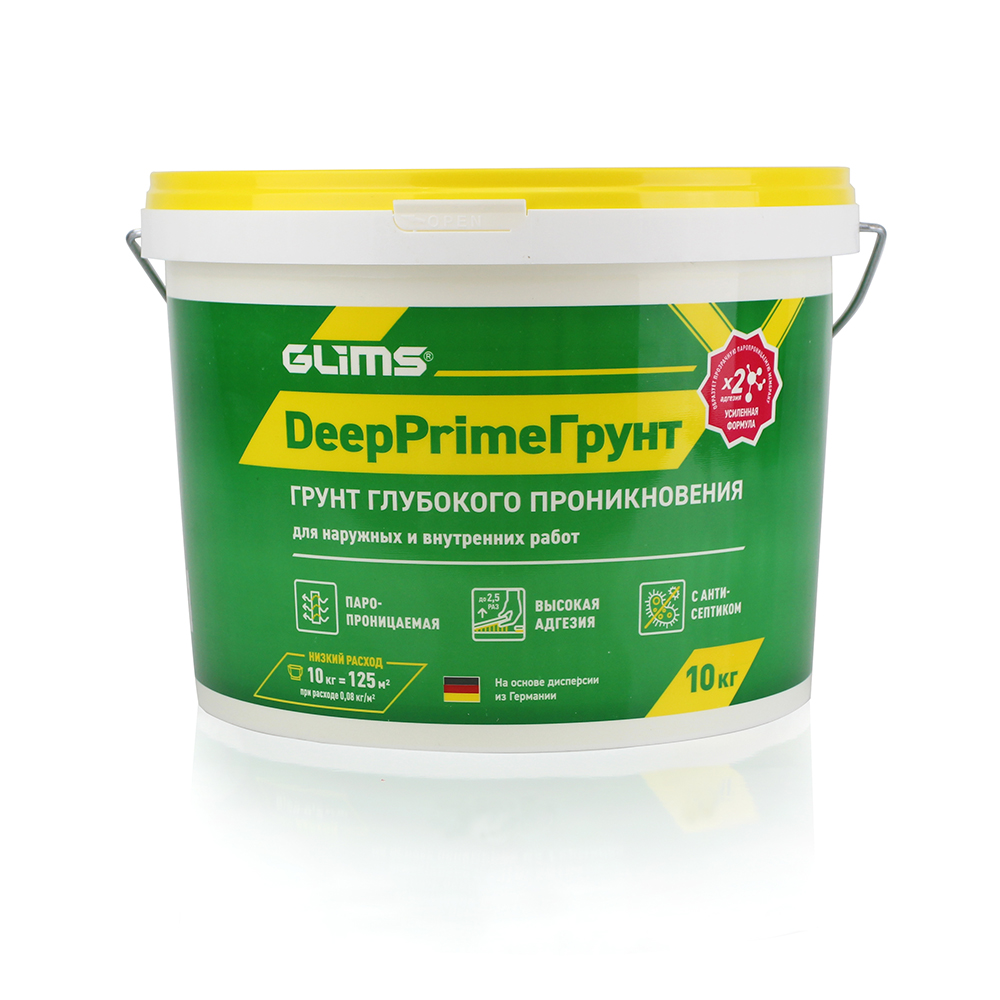
- Acrylate. Universal deep penetration primer based on acrylates. Does not create a film, which is important for the walls to "breathe". Well strengthens the base, reduces the consumption of glue for wallpaper. It has a high permeability. Acrylate soils are also economical in consumption.
- Acrylic This primer consists of acrylic polymers and is universal. It is used for application on walls made of drywall, wood, concrete, paint, asbestos cement, plaster.
Types of grounds:
- Gypsum plasters, putties. It must be primed at least two times, becausethe base is highly absorbent and not the most durable. Provided that we have chosen good quality soil from a reliable manufacturer, for example GLIMS DeepPrime Primer or GLIMS PrimeGrunt. We process the gypsum base with these primers twice, this will be enough to prepare it before gluing the wallpaper, including heavy vinyl.
GLIMS DeepPrime Primer or GLIMS Prime Primer is a finished material that does not require the addition of solvents or water.
The antiseptic additives that make up the primer prevent the growth and spread of fungus and mold. That is why such primers are very recognizable and in demand among builders.
- Cement plasters and putties. This type of substrate does not have such a strong absorbing ability as gypsum, it is enough to prime it once with this soil and this will be enough for wallpapering. Also, these primers are suitable for painting or wallpaper, followed by painting.
You can apply the solution with a brush or roller.
Primer preparation
Before proceeding with the work, it is necessary to decide which primer to choose for the wallpaper, determine its functional features, find out how much wallpaper can be glued after the primer?
To do this, you must:
- Hold the surface of the wall with your palm and see if there are traces of plaster or white coating on it, you will need the soil used for chalky foundations with deep penetration.
- Determine the density of the old finish on the wall. To do this, you need:
- wet the wall with water;
- identify places where it is absorbed most quickly. They must be primed in several layers.
- Before making a primer for wallpaper, it is imperative to inspect the surface for mold or fungus, which requires a special primer that destroys fungal spores and prevents their development. It is applied over and under the plaster.
- Low-porous walls are primed with a material with enhanced adhesion properties.
- Porous and loose substrates must be treated with formulations that have a critically high penetration effect.
Tip: Priming under the wall wallpaper should be in several layers. Before carrying out the process, it is necessary to calculate how much consumable is required for the job.
For this:
- The area of the entire surface to be glued with wallpaper is calculated.
- The resulting value is multiplied by 1.5, so much soil will be needed to apply one layer. But first, you should familiarize yourself with the manufacturer's instructions to determine which primer is under the wallpaper, how much it dries, and its consumption per square meter.
It is better to use the following recommendations before work:
- A bucket is being prepared.
- A mixture is poured into it.
- A plastic mask is installed to help squeeze out excess liquid from a brush or roller to save solution.
- Hard-to-reach places are processed with a brush.
- Each coat should dry well before applying the next. The dried coating will be smooth and slightly sticky to the touch.
- The primer must be applied from top to bottom.
- Floors should be covered with polyethylene. Any mixture is an adhesive that will be difficult to remove from flooring.
How to prime walls
To carry out repairs, there are several recommendations, including preparatory work.
These include:
- The walls are inspected very carefully for the presence of chips, small potholes, all kinds of bumps and other defects. They are subject to plastering, puttying, sanding and drying.
- Primer is selected. It is better to use an alkyd, adapted to wood, or a glyphthalic primer, which is better to process metal planes or from wood, located in a relatively dry room.The universal remedy is acrylic primer, suitable for protection on any base except metal.
- Before carrying out the primer, it is necessary to take measures for personal safety:
- close your eyes using safety glasses;
- cover your head;
- wear rubber gloves.
- Read the instructions from the manufacturer of the primer. In some, it is recommended to mix the composition thoroughly before use. In this case, you can use special tools or an electric drill with an original nozzle that simulates a mixer.
- Since the primer is a liquid composition, in order to avoid splashing it must be poured into special containers like a trough in small portions.
- When working, it is better to use soft rollers with long handles, as in the photo, so as not to use additional tables and chairs to support a person.
- It is very necessary to make sure that the mixture covers the entire surface of the walls, without leaving “bald spots”. If there is a risk of a mistake, a pigmented primer may be used.
- The walls must be dry, and only after that you can glue the wallpaper.
How and what can be primed for wall wallpaper, what primer is used for non-woven wallpaper, the video will tell.
Why do I need a primer wallpaper
The primer is intended for wallpaper to bind the existing small layer of dust on them and harden the loose surface of the material. Do I need to prime the wallpaper before painting? After all, the primer penetrates deep into the wallpaper, will reach the adhesive layer and destroy it. After drying, the primed wallpaper may skew.
However, there is a slight advantage:
- Wallpaper can absorb paint very much. Wallpaper is primed to even out the absorption of the coating.
- The consumption of coloring material is reduced.
In each case, you should carefully study the instructions, determine if you need to prime the wallpaper before painting. If priming is neglected before wallpapering, then they can fall off during the year, and peeling off when painting a wall.
